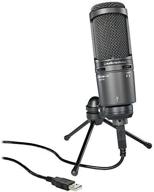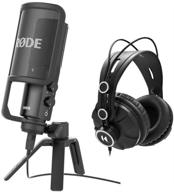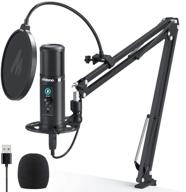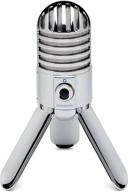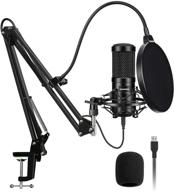Best Microphones for Podcasting
Choosing the right microphone is one of the most important decisions when starting a podcast. The microphone will have a big impact on the overall audio quality of your podcast recordings.
Here are some of the best microphones for podcasting in different budget ranges:
Under $100
- Blue Snowball iCE - A great USB condenser microphone perfect for beginners. It has a cardioid pickup pattern to isolate your voice.
- Audio-Technica ATR2100x-USB - This is a dynamic USB/XLR microphone so you can connect it directly to your computer or to a mixer. It includes a stand and offers great value.
- Samson Q2U - A versatile microphone with both USB and XLR outputs. It has a headphone jack for direct monitoring and comes with a desk stand.
$100 to $200
- Blue Yeti - One of the most popular podcasting mics with USB connectivity. It has a tri-capsule design and 4 pickup pattern options.
- Shure MV7 - A dynamic hybrid microphone with both USB and XLR connectivity. It has touch controls and auto leveling features.
- Rode PodMic - Specifically designed for podcasting, this mic has a tight cardioid pattern to isolate vocals and reduce ambient noise.
Over $200
- Shure SM7B - A professional dynamic XLR microphone known for its warm, smooth sound. It requires additional audio equipment like an interface.
- Neumann TLM 102 - A high-end condenser microphone with excellent sound quality for vocals and acoustic instruments.
- Electro-Voice RE20 - This broadcast-quality dynamic mic minimizes unwanted ambient noise and is a popular choice for podcast pros.
Key Considerations
Here are some key factors to consider when selecting a microphone for podcasting:
- Connection - USB, XLR, or hybrid connectivity
- Pickup Pattern - Cardioid patterns help isolate vocals
- Type - Dynamic, condenser, or ribbon
- Price - Budget-friendly to professional models
- Accessories - Shock mount, pop filter, stand
Be sure to test out microphones before purchasing to make sure it suits your voice and recording environment. With the right mic, you'll be able to achieve high-quality podcast recordings.
Choosing the Right Microphone for Streaming
Having high-quality audio is crucial for streaming content online. The right microphone can help make your voice sound smooth, full, and professional for your audience.
Here are some factors to consider when selecting a microphone for streaming:
Type of Microphone
There are a few main types of microphones to choose from:
- Dynamic - Great for isolating voice and minimizing background noise. Durable and versatile.
- Condenser - Excellent sound quality capable of capturing subtle tones. Requires power.
- USB - Convenient plug and play USB connectivity. Best for basic streaming setups.
Similar products
Polar Patterns
The polar pattern determines which directions the microphone picks up sound from:
- Cardioid - Picks up sound from the front, ideal for streaming solo.
- Bi-directional - Also picks up sound from the rear.
- Omnidirectional - Picks up sound equally from all directions.
Top products in 🎤 Microphones
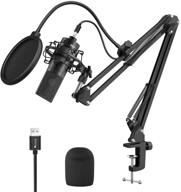

15 Review

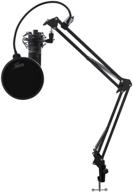

22 Review

Key Features
- Frequency response - Capturing a wide frequency range results in fuller audio.
- Sensitivity - More sensitive mics need less gain but also pick up more background noise.
- Impedance - Important for determining proper gain staging with other equipment.
Another interesting products
Budget
Streaming microphones range from under $100 to $400+:
- Under $150 - Great affordable options for casual streaming.
- $200-$300 - Pro-level mics perfect for dedicated streamers.
- Over $400 - Top of the line mics for the best possible streaming quality.
Accessories
Consider mic accessories like:
- Pop filter - Prevents plosive popping sounds
- Shock mount - Isolates the mic from vibrations
- Boom arm - Positions the mic optimally
- Cloudlifter - Provides clean gain boost for dynamics mics
Choosing the right streaming microphone that suits your budget and needs will greatly improve your production quality and capture professional sounding audio.
Microphone Buying Guide for Beginners
For musicians, podcasters, and anyone interested in recording audio, choosing the right microphone is crucial. Here is an introductory guide to help beginners pick the best mic for their needs and budget.
Types of Microphones
There are three main types of microphones:
- Dynamic mics are versatile, durable, and great for capturing loud sounds.
- Condenser mics require power but offer excellent sound quality.
- Ribbon mics are delicate but produce a natural, realistic sound.
Microphone Polar Patterns
Polar patterns determine which direction(s) the mic picks up sound:
- Cardioid - Picks up sound from the front, ideal for vocals.
- Bi-directional - Also picks up sound from the rear.
- Omnidirectional - Picks up sound equally all around.
Microphone Connectivity
Main connection types include:
- USB - Simple plug-and-play connection.
- XLR - Requires external audio interface, more versatile pro-level connectivity.
- Wireless - Convenient but may affect sound quality.
Microphone Features
Important features to look for:
- Frequency response - Wider is better.
- Max SPL handling - Higher for louder sound sources.
- Impedance - Affects signal strength.
- Sensitivity - More sensitive mics require less gain.
Set a Budget
Microphones range from under $50 to over $1000. Set a realistic budget given your needs and experience level.
While more expensive mics sound better generally, there are excellent affordable options for beginners.
Consider accessories like pop filters, shock mounts and mic stands too.
With the key factors above in mind, you can find the ideal microphone to match your skills, budget and recording needs as a beginner.
Top Studio Microphones for Professionals
Advanced recording and mixing professionals require exceptional studio microphones to capture top-tier audio quality. Here are some of the best studio mics used by expert producers and engineers.
Neumann U87
The Neumann U87 is a multi-pattern condenser mic considered an industry standard. It offers an extremely balanced sound with crisp highs and tight lows. The U87 excels on vocals but also shines on instruments like acoustic guitar, piano, and percussion.
Shure SM7B
With its smooth, natural cardioid pattern, the Shure SM7B dynamic mic is a favorite for studio vocals. Vocalists like Michael Jackson and Sheryl Crow have used the SM7B due to its warm, polished sound. It handles loud volumes without distortion.
Sony C800G
The Sony C800G tube condenser microphone is known for its incredibly lifelike, detailed sound. It features multiple polar patterns and switches for bass rolloff and PAD making it an exceptionally versatile studio mic. Artists such as John Mayer, Bruno Mars, and Ed Sheeran have used the C800G.
AKG C414
The AKG C414 condenser microphone has nine selectable polar patterns allowing for ultimate flexibility in the studio. From vocals to drums to orchestral recording, the C414 provides clean, balanced audio reproduction. Its Class-A electronics contribute to the pristine sound.
Rode NTK
The Rode NTK is a premium tube condenser mic offering vintage sound at an affordable price point. It has a cardioid polar pattern optimized for vocals and acoustic instruments. The NTK's rich, warm sound makes it popular for home studios on a budget.
Telefunken U47
The Telefunken U47 is a recreation of the coveted vintage U47 condenser mic used by iconic artists like Frank Sinatra. Like the original, the new U47 provides unmatched smoothness and clarity on vocals and acoustic instruments. It requires high gain preamps to reach full potential.
Investing in flagship microphones enables professionals to achieve studio-grade recordings. Top studio mics capture nuances and tones unattainable with low/mid-range gear.
Microphone Techniques to Improve Your Vocals
Proper microphone technique is essential for capturing the best vocal takes possible. Here are some tips on optimizing your mic technique to get outstanding recorded vocals:
Use a Pop Filter
A pop filter is a must for vocal recording. The mesh screen prevents plosives (popping P's, B's etc.) that can distort your track. Position the filter 6-12 inches from the mic.
Distance from the Mic
Keep 3-6 inches between your mouth and the mic for optimal presence and intimacy in the vocal sound. Get too close and the proximity effect boosts bass excessively.
Angle toward the Mic
Aim your mouth toward the upper edge of the mic at about a 45 degree angle. This picks up the full range of your voice cleanly.
Remain Stationary
Try to maintain the same distance and angle from the mic when recording. Moving around creates inconsistent tones and sibilance issues.
Use a Shout Mount
Shock mounts isolate the microphone from vibrations and noise. This prevents rumbling from footsteps or bumping the stand accidentally.
Manage Plosives
Over-pronouncing plosives can distort the audio. Focus on keeping plosives smooth and natural as you would in conversation.
Stay Hydrated
Keep water nearby and stay hydrated to maintain vocal cord elasticity. Hydration equals better vocal takes.
Use Compression and EQ
Strategic compression evens out dynamics, allowing softer phrases to shine. EQ shapes tone, enhancing the most pleasing elements of your vocal timbre.
With technique, the right gear, and some post-processing, you can achieve radio-ready vocal recordings in your home studio.
How to Connect and Setup Your Microphone
Getting your microphone connected properly and optimized for your setup is key to achieving great sound quality. Follow these steps to connect and configure your mic.
Check Microphone Compatibility
Make sure your microphone will work with the devices you want to use it with. Common mic connections:
- USB - Plugs directly into computer.
- XLR - Requires an audio interface with XLR input.
- 3.5mm - Plugs into consumer devices like phones.
Select an Audio Interface (For XLR Mics)
If your mic has an XLR output, you'll need an audio interface with XLR input(s) to connect to your computer. Choose an interface with enough inputs/outputs for your needs.
Set Proper Gain Structure
Proper gain staging means setting the optimal signal level at each stage - the mic itself, audio interface, and in software. Follow interface instructions to set healthy input gain without clipping.
Use a Microphone Stand or Boom
Position the mic properly using a stand. Condenser mics often require standalone shock mounts. Boom arms allow flexible positioning.
Minimize Vibrations
Isolate the mic and stand from vibrations using shock absorbers and weights. This prevents rumbling noises.
Consider Accessories
Accessories like pop filters and windscreens prevent unwanted plosives and noise.
Connect Monitoring Headphones
Use closed-back headphones to monitor your mic input without bleed or delay.
Set Input Levels in Software
Adjust the input volume from your interface inside your recording software for optimal signal without clipping.
Taking the time to properly connect your microphone setup results in professional sound and optimal recordings.





